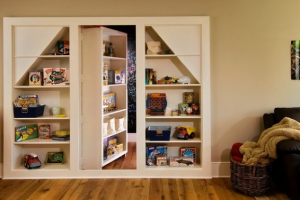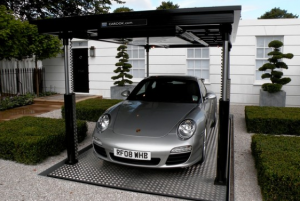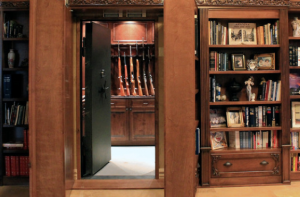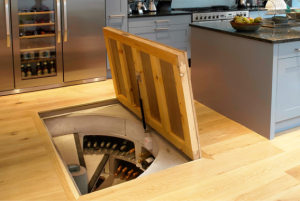Everyone loves a secret.
 Hidden rooms and passageways might seem like the stuff of a Victorian murder mystery, but these spaces are increasingly popular in homes, with owners installing them for reasons of design, security and just plain fun.
Hidden rooms and passageways might seem like the stuff of a Victorian murder mystery, but these spaces are increasingly popular in homes, with owners installing them for reasons of design, security and just plain fun.
“No one knows it’s there,” says Jerry Stubbs of the secret room he built under the garage of his Spanish Fork, Utah, home. “I put valuables in there, and our food storage and guns.”
Mr. Stubbs, a general contractor, excavated the space, then bought a Creative Home Engineering bookcase with a secret door for access to the room.
Since launching in 2004, Gilbert, Ariz.-based Creative Home has sold about 500 secret doors, says founder Steve Humble. Sales have increased in each of the past three years, he says, with 2014 on pace to be its best year.
Security is a prime consideration for many customers, Mr. Humble notes, but hidden spaces aren’t all a matter of safeguarding against potential intruders.
Hidden wine cellars and children’s playrooms are homeowner favorites, adds John Witt, president of Witt Construction, in Saratoga Springs, N.Y. Secret rooms aren’t Witt’s focus, but with word-of-mouth driving demand, the company takes on several such projects a year, he says.
 Cardok, based outside Geneva, builds garages that rise out of the ground on hydraulic lifts, allowing owners to tuck their cars neatly out of sight when they aren’t in use. “It saves space, and it’s a very discreet design,” says Izabela Waligora, a project manager at the company. “It doesn’t spoil your entrance or your garden.”
Cardok, based outside Geneva, builds garages that rise out of the ground on hydraulic lifts, allowing owners to tuck their cars neatly out of sight when they aren’t in use. “It saves space, and it’s a very discreet design,” says Izabela Waligora, a project manager at the company. “It doesn’t spoil your entrance or your garden.”
 A secret door is cool, but the real fun is in how you open it, says Mr. Humble, of Creative Home Engineering. His bookshelf installation, for example, can be rigged to open via any number of mechanisms: twisting a wine bottle, pulling a candlestick, pushing on a book. “Any kind of secret switch you’ve seen in a movie, I guarantee we’ve done that for a client before,” he says.
A secret door is cool, but the real fun is in how you open it, says Mr. Humble, of Creative Home Engineering. His bookshelf installation, for example, can be rigged to open via any number of mechanisms: twisting a wine bottle, pulling a candlestick, pushing on a book. “Any kind of secret switch you’ve seen in a movie, I guarantee we’ve done that for a client before,” he says.
The company has seen a growing demand for biometric access devices like fingerprint and iris scanners.
Price: $2,500 up to $50,000.
 The U.K.-based Spiral Cellars company sells underground wine cellars built around a spiral-staircase design. Offering storage for a many as 1,776 bottles, the cellars are topped with trap doors that can be finished to match the surrounding flooring.
The U.K.-based Spiral Cellars company sells underground wine cellars built around a spiral-staircase design. Offering storage for a many as 1,776 bottles, the cellars are topped with trap doors that can be finished to match the surrounding flooring.
“So you have a good functional wine cellar, and it’s also very discreet,” says Lucy Hargreaves, co-owner and director of the company.
Of course, she notes, not everyone is interested in discretion. Some customers are opting for glass trap doors that let them show off, rather than hide, their collections below.
And then there are those who want the best of both worlds, and add a little mystery, too.
“We have a client who really liked the glass trap door, but he doesn’t want to see it all the time, so he keeps a nice rug over it,” Ms. Hargreaves says.
Price: $25,000 to $100,000
